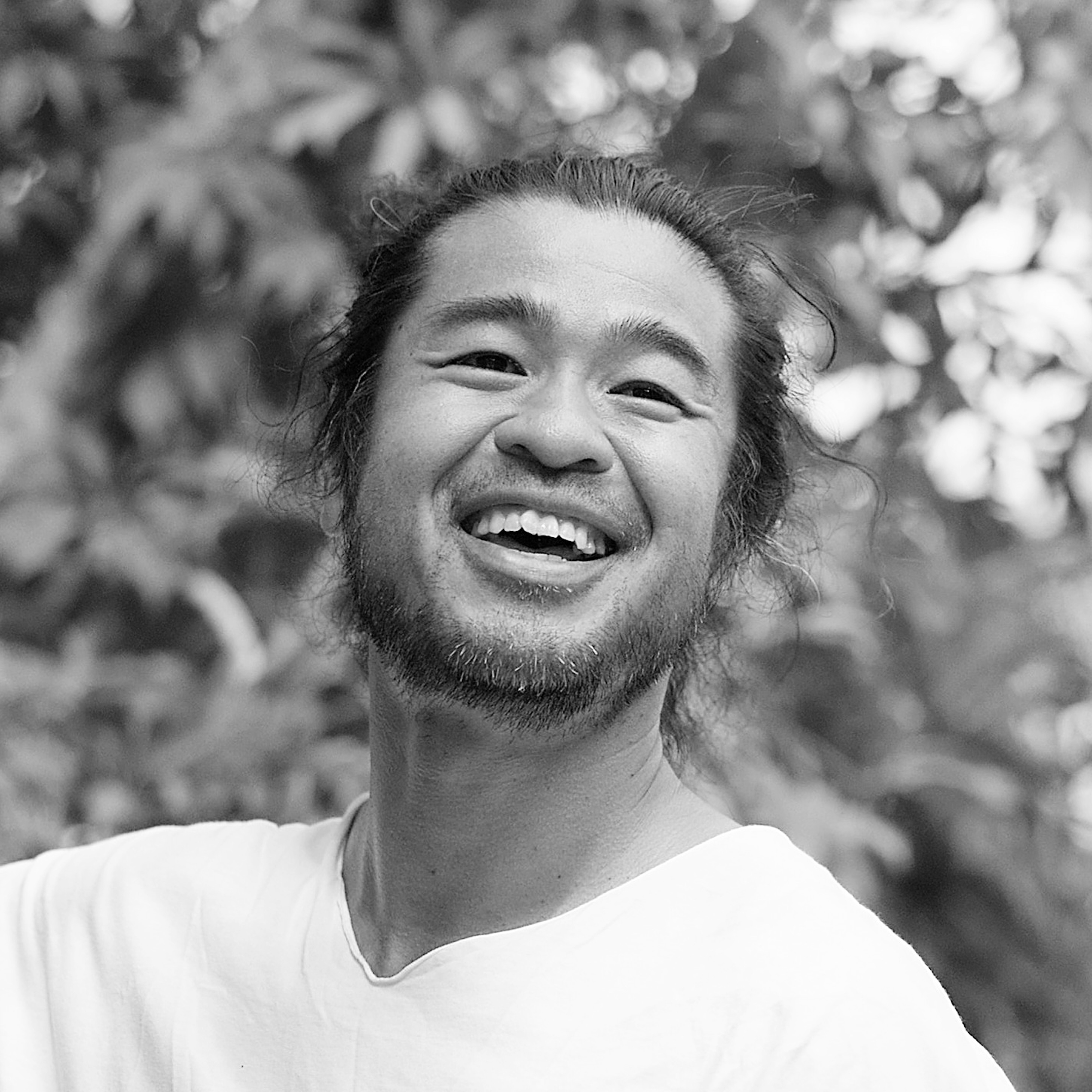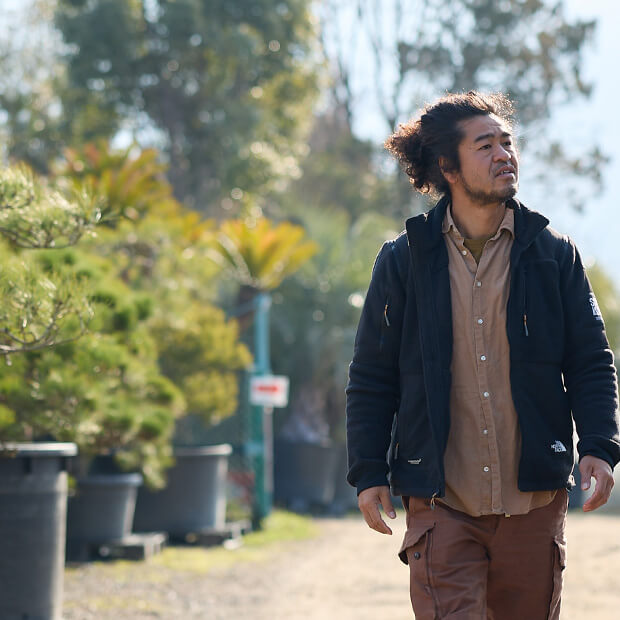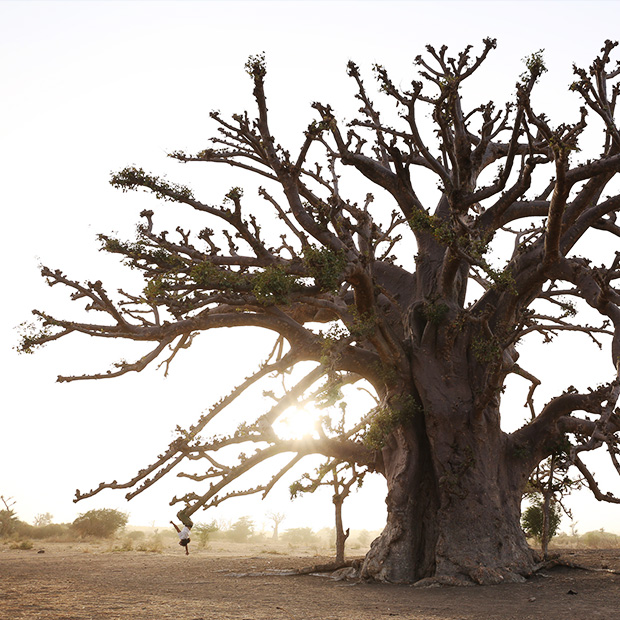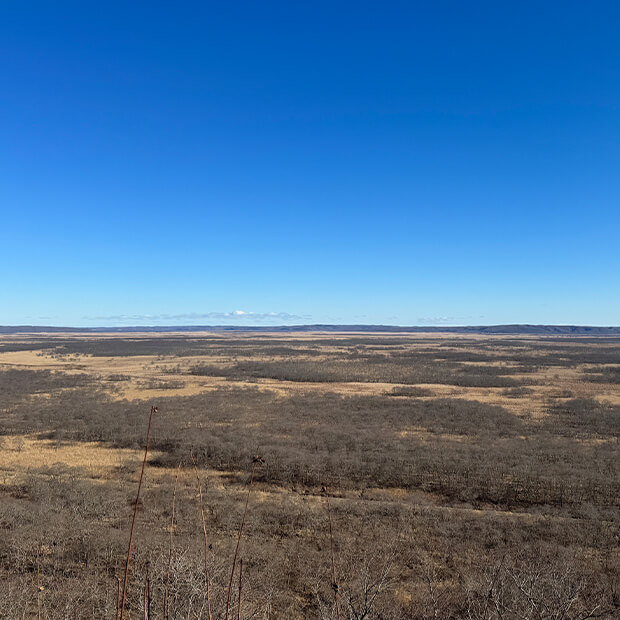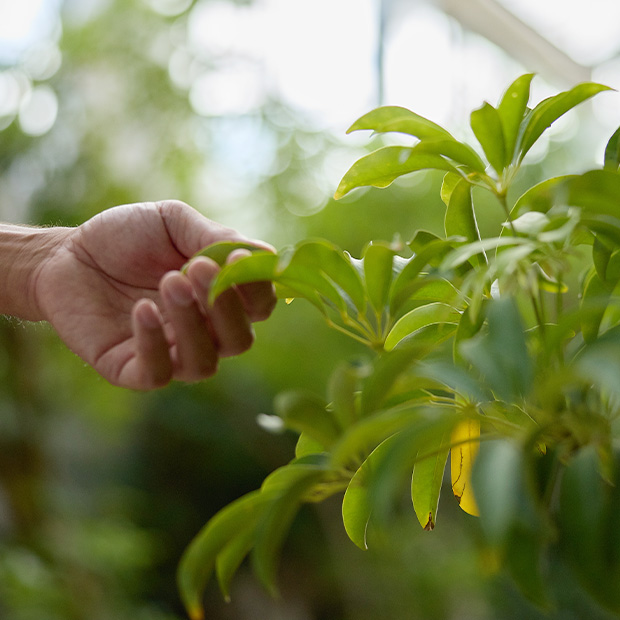Seijun Nishihata actively travels the globe as a leading plant hunter who collects various plants from around the world and delivers them to his clients. Over the course of four talks, he will describe the various plants living in different climates around the world. With base operations located in Ikeda City, Osaka Prefecture, Nishihata leads the Sora Botanical Garden Project, a horticultural nursery that is located in one of the most prosperous areas in Japan for the landscaping contracting. There he manages four greenhouses, each having a different function, and around 1,000 varieties of plants. In this article, which marks the beginning article of the series, Nishihata explains the characteristics of the Sora Botanical Garden Osaka nursery, which seems more like an exhibition center for plants from around the world.
Everything from Production to Distribution to Construction
The headquarters of Sora Botanical Garden Project is in Ikeda City, Osaka Prefecture, which is place with a history for plant production and landscaping spanning 500 years. I was born in a neighboring town, and my family members have been leading figures in this field. While working there, I gained valuable knowledge and refined my skills. Then, from the age of 21, I started traveling, not only in Japan but around the world, and this inspired me to try different methods than the ones that I was accustomed to.
When working with plants, there is a clear division of roles. Nursery crop producers, the so-called “nursery workers,” grow trees in their fields and ship them, and these are purchased by landscaping companies to carry out construction work to create gardens. In between, there are wholesalers who purchase and stock plants. However, in my case, I didn't want to be locked into a particular category that someone else had decided.
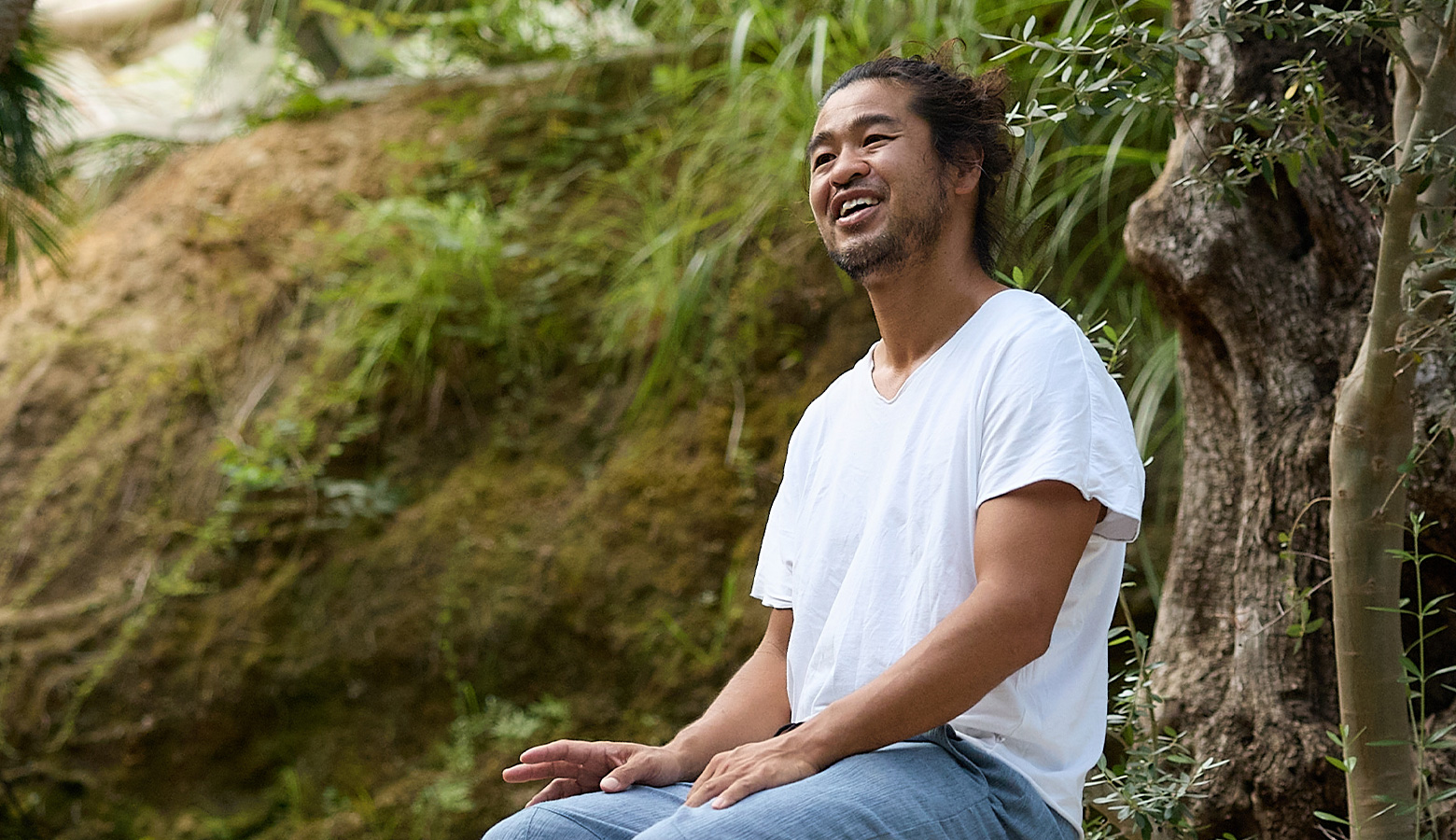
I am a producer who grows plants, a wholesaler who finds and delivers plants according to customer requests, and a landscaper who performs on-site work. In order to balance these three things, I needed to have a large plot of land that is always stocked with plants so that I can meet any request. As a result, I have ended up setting up a nursery of about 1.6 hectares, but even this is still insufficient.
Creating Comfortable Air Using the Power of Plants
At Sora Botanical Garden, we manage plants that grow in various environments around the world, including temperate zones, deserts, and cold regions. That makes having a greenhouse essential to our work. Currently, we utilize four types of greenhouses. The first is a greenhouse for tropical plants. In Japan, these are often distributed as foliage plants, and this greenhouse is a place to stock plants before shipping them to offices, commercial facilities, and stores.
When people think of a greenhouse, they probably have an image of a place to protect plants from the winter cold. While this is a necessary function, a greenhouse also serves to protect plants from the summer heat and UV rays. Even though they exist in the tropics, many tropical plants will stop growing if the temperature exceeds 30℃. As with humans, temperatures from 20℃ to 25℃ are the most comfortable and suitable for growth. For this reason, plants are placed around greenhouses in the summertime to create shade, and skylights are opened to allow hot air to escape. Radiative cooling then makes the inside of the greenhouse cooler than the outside by using the power of the plants themselves to create a comfortable atmosphere.
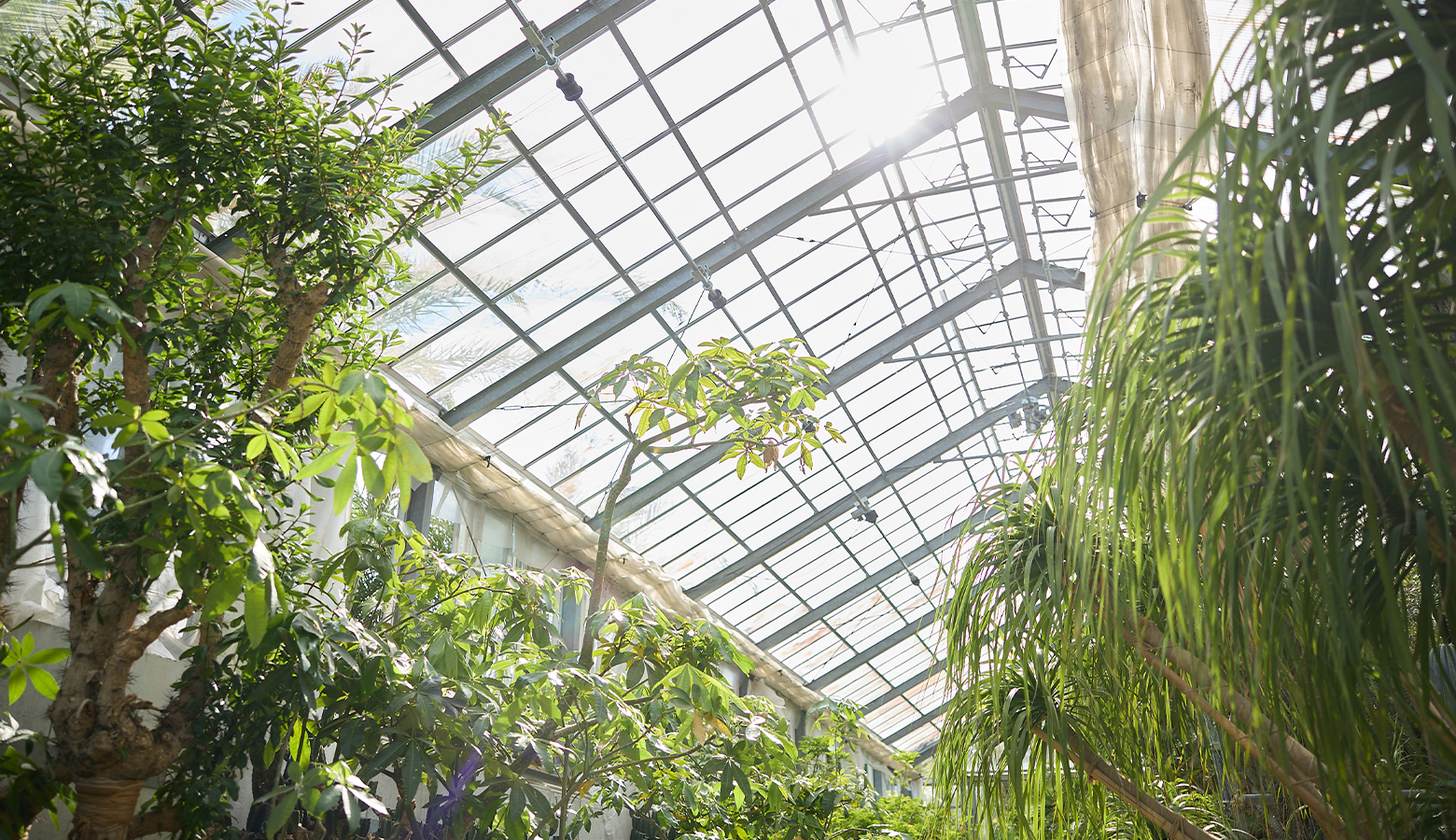
There is also a large greenhouse for curing plants. For example, plants purchased from other regions are allowed to rest here in containers for a while, allowing them time to establish strong roots and grow thick branches and leaves before being shipped for an event. On the other hand, it is also a place where plants can recover once they have gone to an actual event site and been returned. Larger greenhouses have greater temperature stability, so our greenhouse for curing is large and connects two buildings.
Instead of purchasing and selling finished plants like a typical flower shop, we purchase plants that are still in their raw material state, so each plant is in a different condition. That's why we need a greenhouse for this type of curing.
Maintaining Optimal Environment by Plant Traits
Greenhouses specializing in cacti are somewhat unusual. Cacti plants are very unique in that even though cacti don't have eyes, they can tell how high the ceiling is above their heads. If the ceiling is low, the cacti will not try to grow taller and will take on a tight, rounded shape. Because cacti with a stubby form are more valuable, cacti greenhouses are typically small and have low ceilings. A small greenhouse can heat up quickly and get cold as soon as the sun goes down, but this kind of environment is very similar to the climate of the arid regions where cacti grow, so it makes sense.
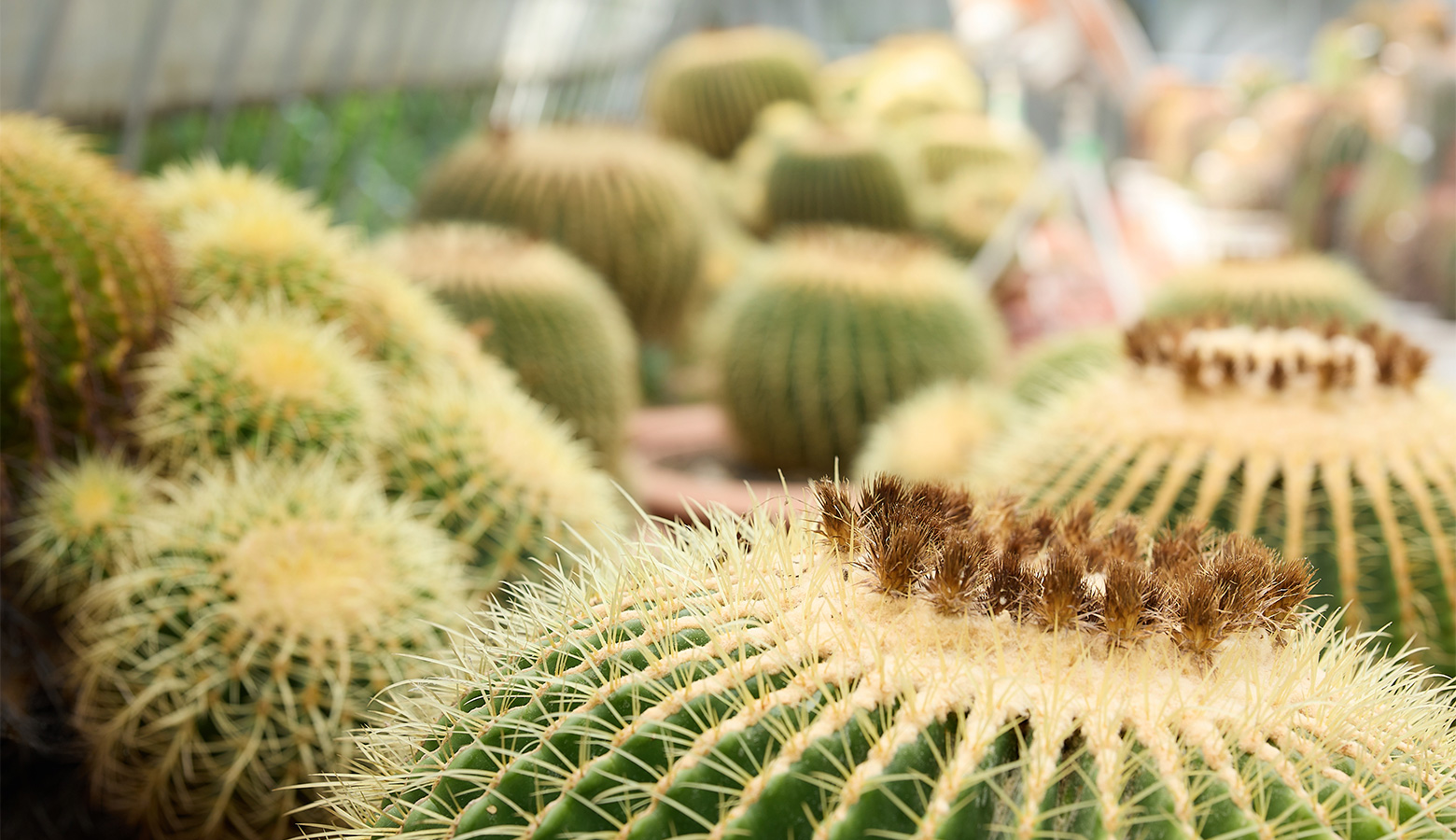
Airflow is truly important when it comes to temperature control. As mentioned earlier, cold air gradually moves downwards and warm air upwards. That’s why skylights are opened in the summer to let the hot air escape. When heating in the winter, a device is used to blow the warm air from the boiler downward. Additionally, the greenhouse should be oriented north to south so that the plants receive even sunlight. In this way, we manage temperature by always being aware of airflow.
In contrast to these three types of greenhouses, the fourth greenhouse is set up to extend from east to west. This greenhouse is especially unique in that it is built like a wall on the north side of a mountain slope. Because the soil absorbs the heat from the sun, it acts as heat storage material and keeps the temperature inside the greenhouse from dropping too low even on winter nights. This technique is used especially in China, for example, but we are probably the only ones who use it Japan. The plants that we manage are quite large and, to a certain degree, are resistant to the cold, so having strict temperature control is unnecessary. For this reason, methods using thermal radiation are also suitable.
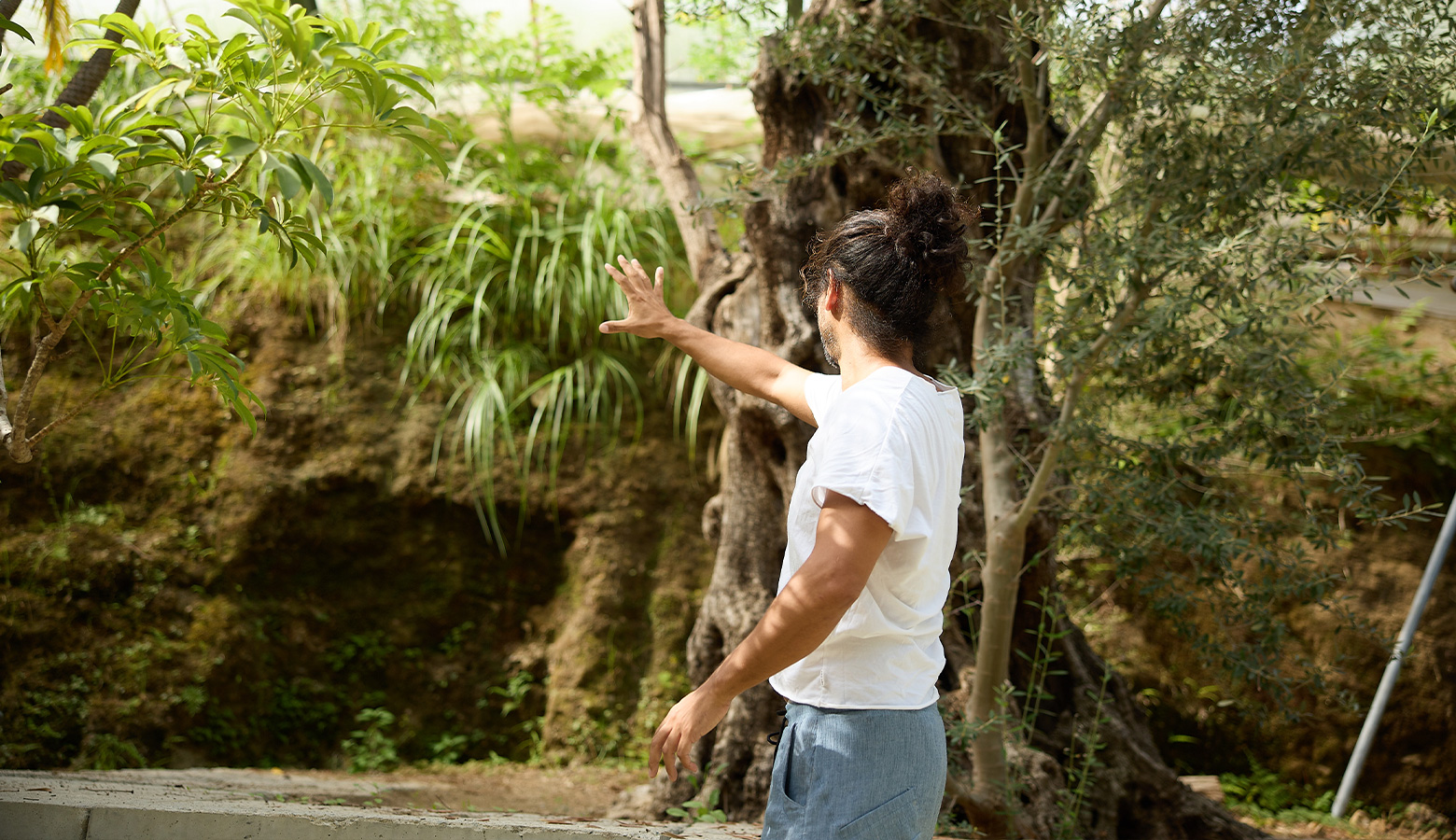
Greenhouse taking advantage of a mountain slope
I think we are probably the only company in Japan that uses four different types of greenhouses like this. Besides the greenhouses, we also employ open field cultivation, which further divides plants into those planted in flowerpots, those planted in fields with moist soil, and those planted in dry fields. Whereas in the plant industry where the basic principle is large quantities and small variety, we operate differently by producing small quantities with many varieties. That's why we need to create various environments. While it differs depending on the season, we grow around 20,000 plants in about 1,000 varieties. More will be blooming in the early spring.
What the World Taught Me about Air and Plants
There are many people who work with plants in Japan, but I think I probably travel around the world the most. For this reason, I would like to share what I have learned through this experience in a series of articles. Whether it be hot countries, cold countries, desert countries, or countries with four seasons, there are many different environments on earth. And while these places may be generally considered hot, the heat in humid countries of Borneo and Brazil is completely different from the heat of the arid regions of North Africa. Even when speaking of places having four seasons, some countries, like Japan, have dry winters, whereas other regions, like Europe, have humid winters. I would like to discuss the relationship between plants and air in an easy-to-understand manner from a global perspective.






